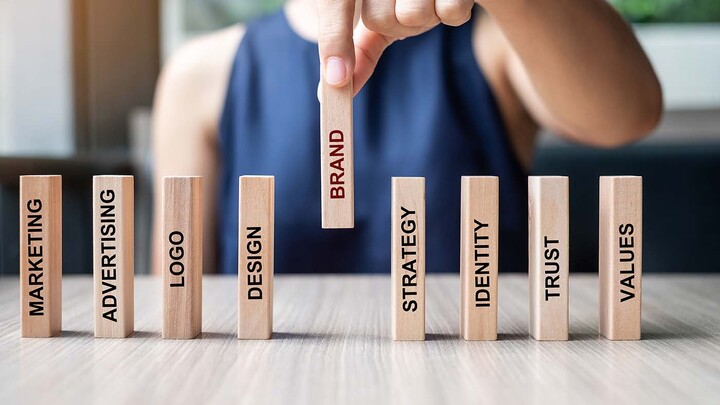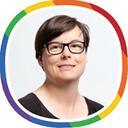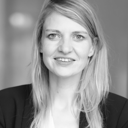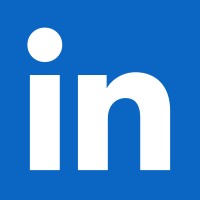From User To Thought Leader on LinkedIn
LinkedIn expert Britta Behrens provides tips on how to build your personal brand on the career network.

© Panuwat Dangsungnoen| istockphoto.com
The career network LinkedIn is much more than a digital business card. Expand your professional network, generate leads, identify new customers or build your own personal brand: If you approach the topic skilfully, you can use the platform to advance from user to thought leader.
In the first half of 2021 alone, the number of users in the DACH region grew by one million. Over 16 million people use the career platform in the DACH region alone, and over 774 million worldwide. In total, 56.9 per cent of LinkedIn members are male, 43.1 per cent are female. In this interview with Hanna von der Au, eco’s contact person for the #Ladies in Tech initiative, LinkedIn expert Britta Behrens provides help and tips on how to get started with personal branding on LinkedIn. This interview was also featured in the eco white paper ‘Women in Tech in Germany: Status Quo, Strategies, Best Practices & Success Factors’.
Hanna von der Au: How do I approach the topic of personal branding as a newbie?
Britta Behrens: To make the first impression, your own profile is of fundamental importance. My tip is, therefore, to first spruce up your own LinkedIn profile: for example, add a background picture, use a meaningful, up-to-date profile picture and, very importantly, enter a profile slogan under your name. Many people use the profile slogan area in the classic way, entering their position and company there. However, this is not advisable because the profile slogan is always there when I communicate on the platform, e.g. publish my own posts or leave comments on others.
Therefore, your own expertise should always emerge from the slogan. What is recommended are a few suitable keywords with which you identify and which clarify your own expertise. Aside from that, please really focus on the overall profile. The following questions help here: What exactly is my current position? What responsibility do I have? Which topics am I passionate about and which would I like to be associated with? Another tip: Be sure to use the in-focus area as a stage: for example, to prominently present websites or relevant articles and to use these as leads to bring profile visitors to landing pages where they can be able to delve deeper into the topic or company.
Of course, first impressions count – this is also true in the digital world. If I now have a meaningful profile: How do I build my network?
Britta Behrens: First of all, it is advisable to bring existing contacts into the network – this should include not only customers and business partners but also former colleagues. In the second step, I should see who is communicating on LinkedIn about my topics, comment on their posts, follow them and make a networking request. LinkedIn groups or LinkedIn events are also a good way to keep an eye out for new interesting contacts because they directly result in a topic match and points of contact. This makes it easier to send a contact request: “Hey, I saw you are also involved in the Ladies in Tech LinkedIn group from eco. I would like to network with you”.
Please don’t send any requests without a message; this is not only bad form, but your contact request also runs the risk of being rejected.
Contrary to what is unfortunately still believed, it is not the number of followers but the quality thereof that is decisive in building a useful network. Therefore, do not just accept every contact request, but look first at the person’s profile and decide whether you want to accept the request. The following questions are helpful: Can I offer the person added value or assistance, or does the person have skills and abilities from which I can benefit?
How do I find my topics and become more visible?
Britta Behrens: This requires a clear answer to the question: Which issues do I want to be associated with? What interests me, and what do I want to position myself with? There’s no use writing about personal branding on LinkedIn today, woodcarving tomorrow, and knitting the day after. It’s better to focus on two or three topics where you know that’s where you want to be in the future. To become visible, it helps to look at how others do it who already have a certain expert status on LinkedIn. Commenting on posts is essential. For example, by adding useful further sources and links or your own statements with experiences. Then you automatically become more visible.
Through your comments, you will be noticed by others, found interesting, and your profile will be visited more often. Then, little by little, start writing your own posts. Use two to three appropriate hashtags in your posts and tag contacts who have something to say about the topic so that they join the discussion. This way you start the engagement and your post becomes more visible. In terms of content format, choose the one that suits you best: It doesn’t have to be a video; plain text posts also work on LinkedIn. Or you could create a PDF slideshow with a few tips. Sites like Canva.com makes that quick and easy to create creative content.
The topic of visibility also includes speaking at conferences. You are also present as a speaker at many events. This is certainly a goal that other women also strive for, and it also helps us to counteract the phenomenon of #allmalepanels. How did you, as a formerly rather introverted person, make it onto the stage?
Britta Behrens: I have been to many conferences as a guest. At some point, I realised that what the speakers on stage were saying, I could also do. My sense was: Why don’t I do that and let others share my knowledge?
Moreover, female speakers are always eagerly sought. I have always asked myself why there are often only men on stage. There are enough female speakers, you just have to ask the right people, make the appropriate recommendation and the organizers can’t talk their way out of it. Mixed panels on stages – that is possible and achievable. With this motivation, I set myself the challenge of speaking on stage. What you should know is that I used to hate giving speeches and all kinds of presentations. I had to force myself to a certain extent and leave my comfort zone. When I now stand on stage, the excitement and tension might still make me blush, but my expertise and my own trust in my knowledge give me confidence.
Britta Behrens is a LinkedIn, social selling, and personal branding expert, has over 18,000 followers on the platform, is currently writing a book on the subject of personal branding on LinkedIn, and regularly provides her followers with tips on the subject. Behrens also shares her knowledge as a consultant, keynote speaker, and author at numerous events, conferences, workshops and in trade magazines.
Hanna von der AU is PR Manager at eco – Association of the Internet Industry. She is responsible for the development of communication strategies and concepts, content marketing activities, social media channels, and press releases. The topics closest to Hanna’s heart are diversity and Women in Tech. She leads the activities around eco’s German #LiT – Ladies in Tech initiative and loves getting in touch with more women in the industry. Her aim is to make the Internet industry more colorful and diverse. Before joining eco in 2019, Hanna worked as a digital campaign consultant with a focus on content generation at a digital consultation agency (for customers like NRW.INVEST, GS1 Germany, Peek & Cloppenburg, Coop, Lufthansa).
The eco Association has just launched a directory of female speakers from the tech industry: https://lit.eco.de/speakerinnen/ . While the link to the directory is currently only available in German, many of the experts also give talks and presentations in English. The directory will be made available in English later in the year."
Please note: The opinions expressed in Industry Insights published by dotmagazine are the author’s own and do not reflect the view of the publisher, eco – Association of the Internet Industry.






